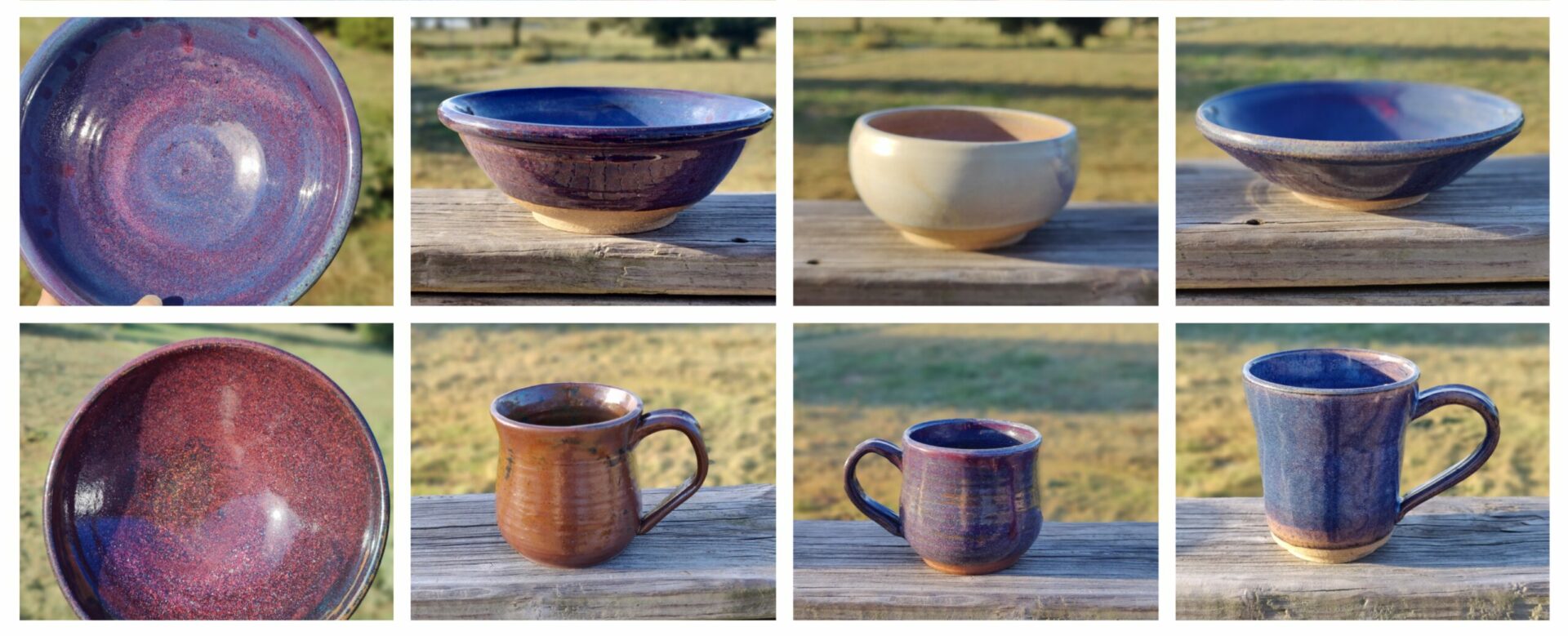Processing the Black Water Trough of clay
Some of you may remember me posting about a huge water trough full of clay I got when we did the foundation for our shop. I’ve used this clay for years by processing out more …

Wild Clay aka local or dug clay post related to finding, processing and testing
Some of you may remember me posting about a huge water trough full of clay I got when we did the foundation for our shop. I’ve used this clay for years by processing out more …
Adding 5% EPK to the bucket of the black tub clay that already had 22% neph sye added did indeed jump the absorption from 1.5% to over 3%. The test tile was less shiny after …
Yesterday, I completed a cone 6 firing with mixed results. The clay from the big tub, which tested at 1.5% absorption but looked shiny, slumped badly. I had been afraid of that. I conducted a …
After trying working with my deep red clay at cone 9/10, I am moving back to cone 6. At least for the time being. I knew when I moved to cone 9/10 that I might …
This is the batch I dug a few days ago and processed half of it to see if I can recreate the accidental perfect batch. I posted a few days ago. I kept it a …
In my last post (the clay with 0.3% absorption at cone 9 oxidation), I mentioned it comes from a low spot on top of a hill. Well, here it is.
This clay comes from an odd low spot, on top of a hill on our land. Right out of the ground, it’s very silty and not plastic enough to throw, fires to above cone 8. …
This body uses one of my lighter colored clays. It’s probably more than 50% sand right out of the ground, however, it’s very easy to process, settles out of a slurry wonderfully, and de-waters quickly. …
The reason I decided to switch to cone 10 reduction vs cone 6 oxidation was to limit the amount of materials I have to buy (and ship) and to reduce the amount of physical labor …
Pretty pleased with the results. This is 100% Moon Clay (dug in Moon, Oklahoma), except for the one pot that slumped. That clay was from beside my house. The Moon clay has 8.2% absorption at …